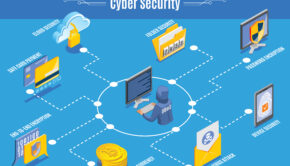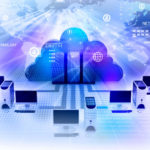How IT Companies Are Innovating the Digital World
Popular wisdom says that all businesses are becoming tech companies; that is, every organization from fast-food chains to industrial machinery manufacturers incorporate some digital components.
Digital innovation touches every department, creating new ways of working that increase productivity and engagement while at the same time creating difficulties scaling them up and creating conflicts with existing structures. It company in Edmonton have promised to stay ahead of the curve and continue innovating the digital world with the help of modern technologies.
Cloud Computing
Cloud computing has emerged as a central pillar of modern technological developments. According to analyst firm Canalys, all new workloads should be deployed using a cloud-native environment by 2025.
There are various kinds of cloud services, ranging from communication and collaboration tools such as Zoom or Microsoft Teams to data storage services like OneDrive or Dropbox and software development environments. Cloud applications offer significant cost savings by eliminating the need to buy or maintain hardware while providing flexible scalability that adapts with an organization’s ever-evolving needs.
Cloud technology also enables businesses to move faster on innovation projects and test ideas without lengthy procurement processes and upfront costs. Of course, it’s crucial that users understand the risks involved with using cloud services, and have back up plans in place if something goes wrong with a vendor.
Artificial Intelligence
AI allows computers to perform cognitive functions associated with human intelligence, including perceiving, reasoning, learning and interacting with an environment. AI-powered technologies include Siri/Alexa voice assistants as well as self-driving cars; all powered by this form of artificial intelligence.
AI development is an arduous task, requiring large volumes of data, complex algorithms and advanced computing power – yet all these resources are now more easily affordable than ever.
AI technology has become an invaluable asset to businesses. It is revolutionizing processes and increasing efficiency while improving customer experiences and creating new opportunities for growth. But the key to its successful deployment lies not solely with installing it but managing it efficiently as well.
Big Data
Every time a customer uses an email app, tags a business on social media, makes a purchase online or at a store, interacts with customer service representative or consults virtual assistant about an issue, they generate data that could prove invaluable in improving how a business operates and delivers value for its customers.
Businesses use Big Data analytics to transform terabytes of information into actionable insight. It reveals hidden trends that help organizations make more effective decisions and increase operational efficiencies; for instance, product return rate analysis may reduce costs by decreasing the need to ship items back to vendors. For maximum effect from Big Data analyses, organizations should implement an information architecture program and data governance processes.
Internet of Things
The Internet of Things (IoT) connects billions of devices to the web, enabling them to communicate and exchange data between themselves and with one another. This data can then be analyzed in order to enhance or enable new services, improving device technical characteristics or providing unique advantages over competitors.
IoT technology relies on sensor technology, which converts real-world variables into data that devices can utilize and share. You’ll find these sensors everywhere from smart cars and buildings to healthcare settings; healthcare IoT systems can reduce record keeping duties while protecting patients by sending alerts when glucose levels fall out of range and sending notifications when required.
IoT also helps companies improve their processes more efficiently by monitoring equipment and identifying issues before they cause problems. For instance, manufacturing companies could use IoT to detect the temperature of machines so they can make necessary adjustments before use.
Cybersecurity
Cybersecurity refers to methods and technologies used to protect IT infrastructure against cyber attacks that could compromise organizational assets like data. Such attacks include threats that target proprietary information as well as consumers’ personal information through theft, hacking or breaches in security.
Organizations must use cybersecurity best practices to secure their assets, monitor, detect and respond to attacks as they happen as well as recover from them.
Implementing security measures across devices ranging from computers and smart devices, routers and routers; networks and the cloud is paramount for effective cyber defense. Tools may include DNS filtering, malware protection, antivirus software and firewalls as well as processes like user authentication and access management; disaster recovery/business continuity/continuity planning/training to teach employees the basics of security – it is vital that all processes be documented so they can be referenced should there be a breach.
It is therefore obvious how cutting-edge technology and methods are being employed to bring about digital transformation and growth. Businesses with a broad range of goods and services, like F12, have the unique potential to assist businesses in achieving their intended goals by using technology and enabling them to innovate and expand.
Cover Image by Freepik
















